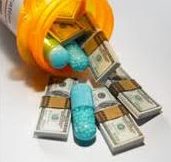| CLICK HERE and let us show how BHM’s economically maintain turn-around times and accuracy for new members.drug prices drug prices |
When it comes to concerns over the rising drug prices, it’s not just an isolated few that should be grabbing the headlines.
A new study published in the Journal of the American Medical Association, which examined prices for the 49 top-selling drugs between January 2012 and December 2017, found virtually all of them rose in price on a regular basis. The median price among those drugs rose 76% over the time period, and 78% of the drugs in the study saw price hikes of at least 50%. More than 4 of 5 products in the study more than doubled in price.
More troubling: The rising prices appear to be immune to the effects of common market forces. The study found that, instead of curbing rising costs, competition among similar drugs actually caused prices to rise together. “For example, we looked at Humira and Enbrel, TNF inhibitors, we looked at insulins, statins, and what we found is the rises in these prices were more correlated with competitors than they were with the rest of the industry,” says Wineinger.
Likewise, generic competition doesn’t seem to be affecting overall prescription drug costs. The mechanism here involves multiple competing trends, according to Wineinger. The cost of generic drugs continues to decrease, but overall spending on drugs has been driven up largely by the big brand-name drugs tracked in the study.
The study comes as the costs of prescription drugs has faced increased scrutiny from the Trump administration and prompted hearings in Congress. After unveiling a drug price blueprint about a year ago, the Department of Health and Human Services recently announced it finalized a rule to require list prices in drug TV ads. It has also proposed to end legal protections for drug rebates in Part D.
The complexity of the prescription drug marketplace obscures the mechanics behind rising drug prices. Wineinger said. In particular, the practice of rebates, which make it difficult to tell whether the list price of a drug is actually a number consumers see at any point in the purchase process. For example, if a rebate accounted for half of a drug’s price rise, it could double over time without affecting what consumers actually pay. Rebates are proprietary information, so it’s impossible for researchers to observe them.
Wineinger is skeptical that rebates are the culprit among the drugs in the study, however. “One of the big things we found is that the prices that people are paying for these drugs are actually correlated with the amount of revenue that each individual product is bringing in, so the drugs that were increasing in cost more actually were bringing in higher revenue than the drugs that were decreasing. So, I think the explanation that these increases in costs are just benign strategies to offset greater reliance on rebates isn’t true for the drugs we examined,” he says.
Wineinger believes that, in the end, the only way to break the upward trend in prescription drug prices will be to allow Medicare and Medicaid to negotiate pricing with pharmaceutical companies. “As long as we’re unwilling to not pay for a drug, I think there’s going to be little incentive for manufacturers to maintain or lower prices.”
CLICK HERE and let us show how BHM’s economically maintain turn-around times and accuracy for new members.

